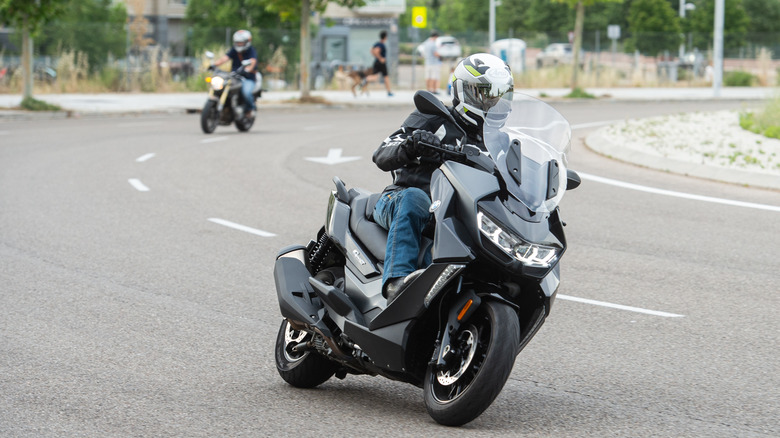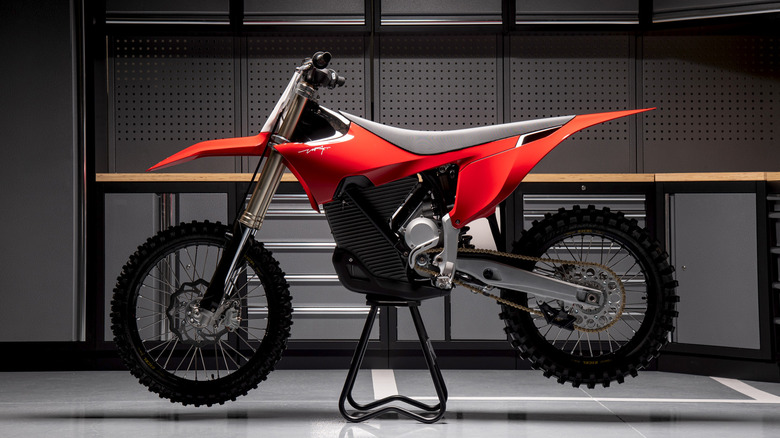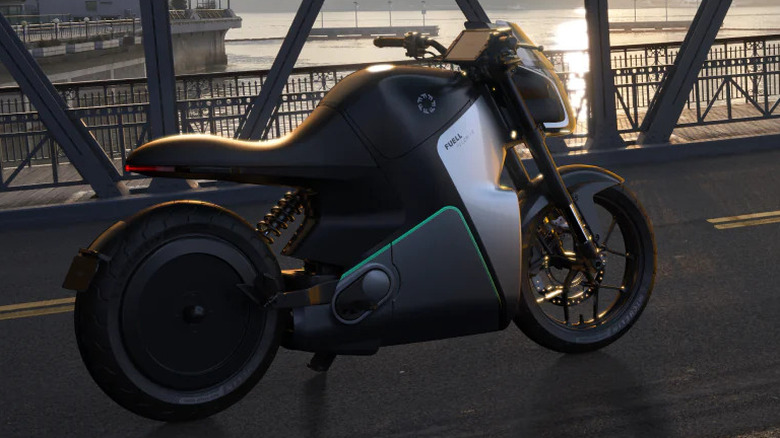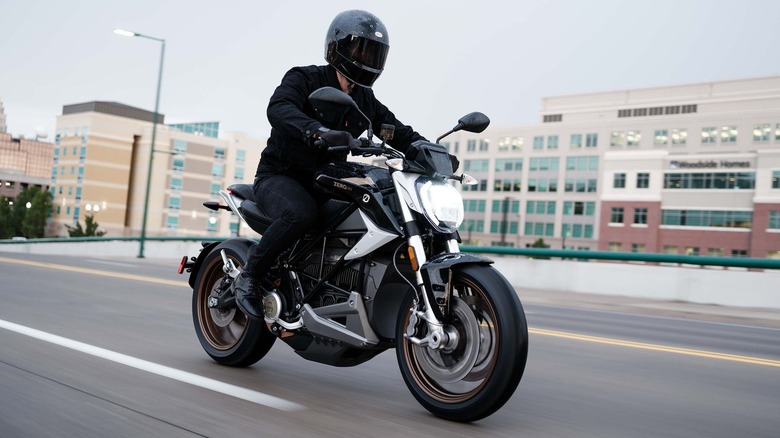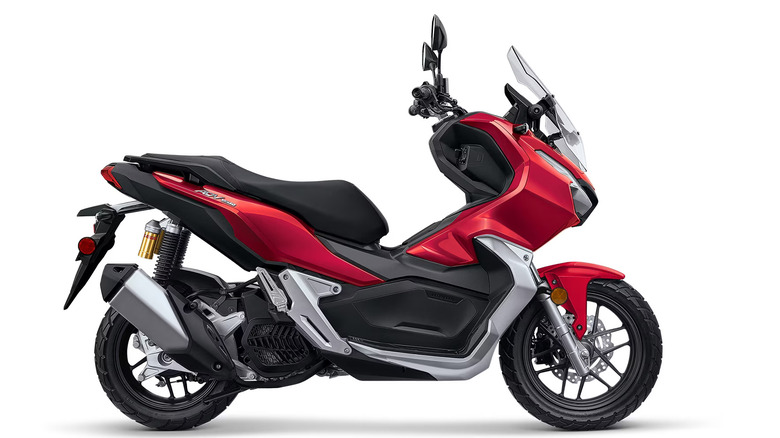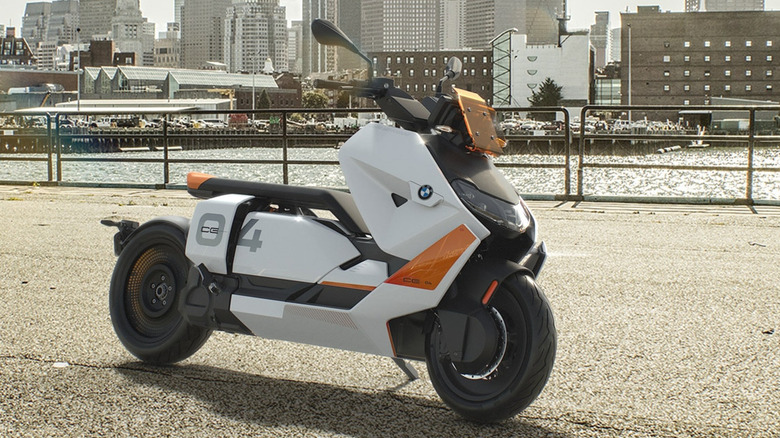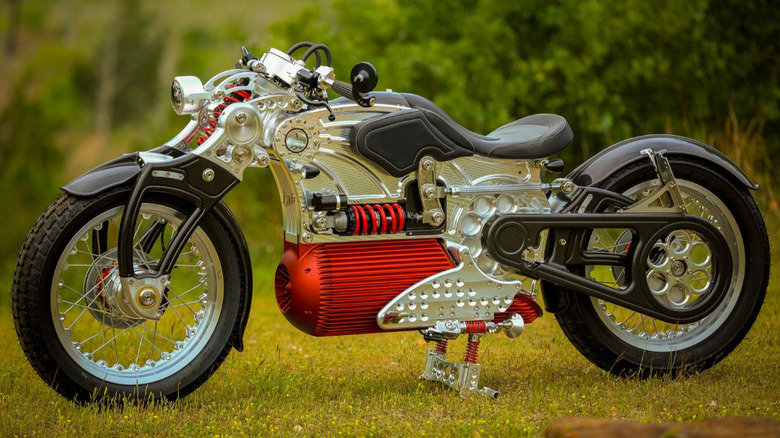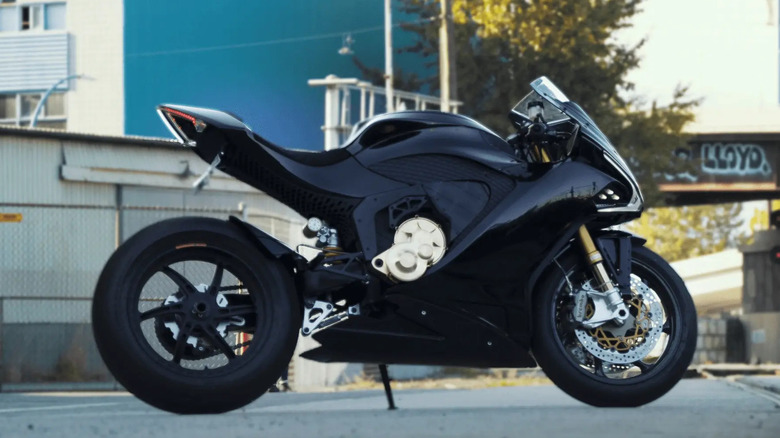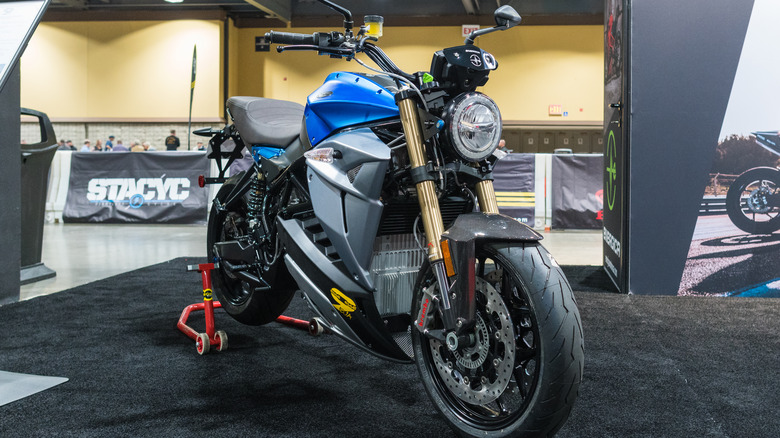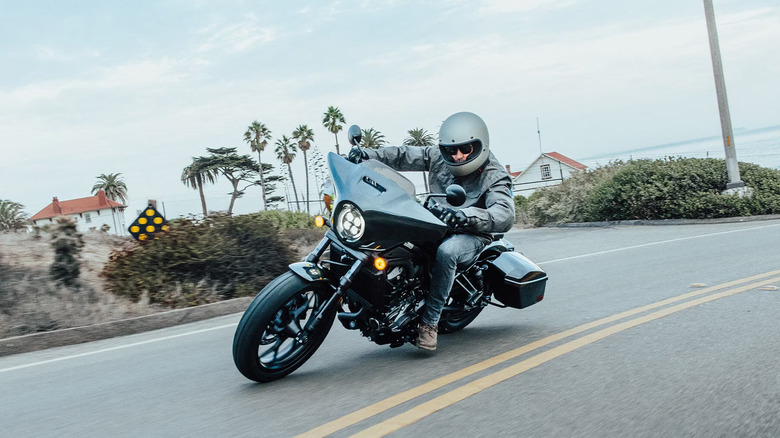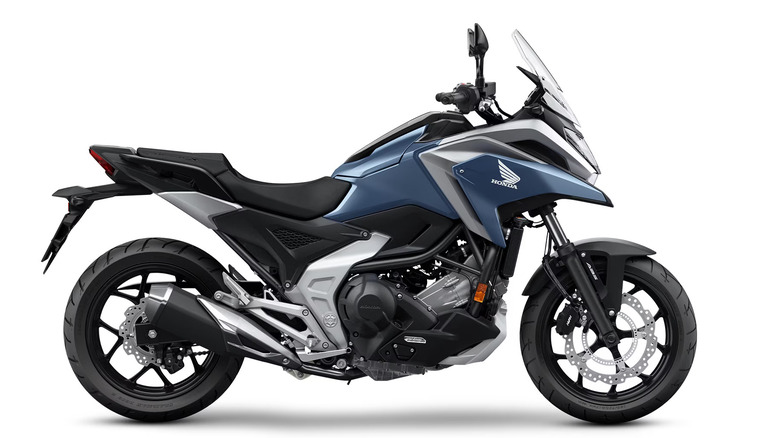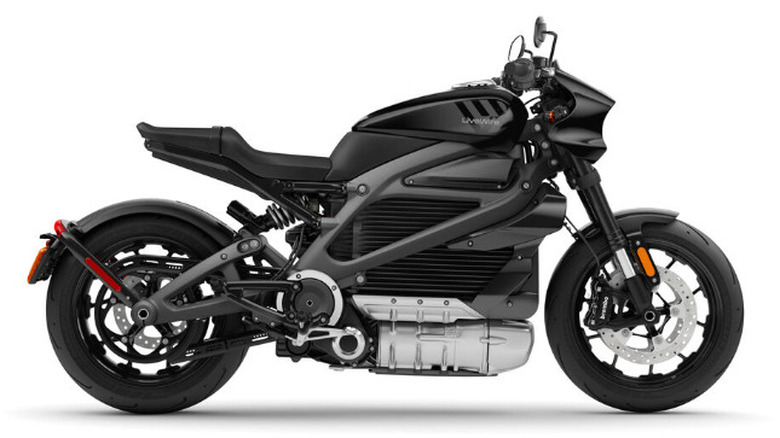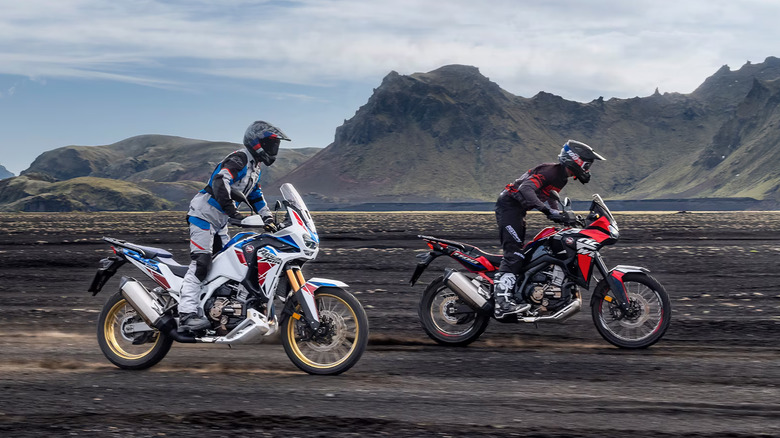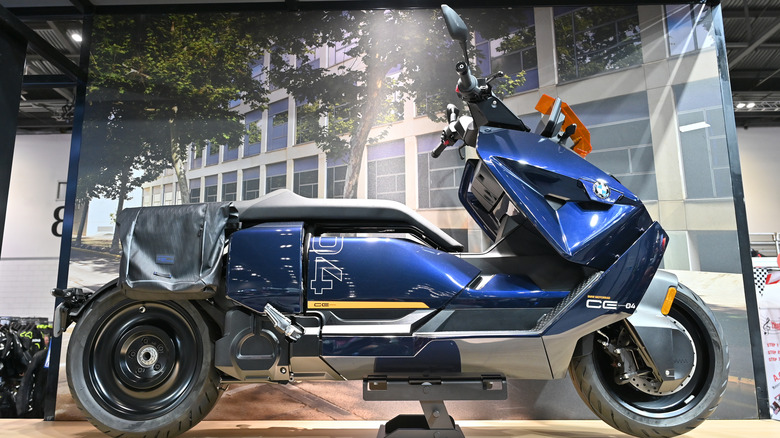12 Radical Automatic Motorcycles That Are Actually Worth Riding
Automatic motorcycles have always been something of a divisive subject among the biking masses. On the one hand, they offer a practical and affordable approach to commuting and are easier to use. On the other hand, they can be seen as too utilitarian and lacking the character and required operating skills of a manual transmission motorcycle. Yet automatics remain popular, and certain manufacturers have had great success introducing automatic gearboxes to existing models.
Honda dominates the gas-powered automatic motorcycle segment. This comes as no surprise when you consider the amount of research and development it has dedicated to creating excellent automatic transmissions over the years. Other brands are starting to catch up, however, especially within the electric motorcycle industry, where manufacturers are producing some highly innovative machines. These include market leaders such as LiveWire and Energica and up-and-coming brands like Damon and Zero.
With the latest developments in automatic gearboxes and electric vehicles becoming a more viable alternative to their fossil-fueled counterparts with each passing year, the margin between motorcycles, scooters, and EVs is becoming increasingly blurred. For this article, we have included any two-wheeler that functions without a manual clutch, including dirt bikes, premium scooters, electric motorcycles, and traditional bikes equipped with DCT and CVT transmissions. The following models represent a new era in biking, and each is radical enough to convert even the most ardent gearhead.
Stark VARG
Stark Future seemingly came out of nowhere when it dropped the Stark VARG electric dirt bike upon us. The company states that this is the most advanced motorcycle in the world, and its specifications appear to back up this incredibly bold claim. For starters, it provides up to six hours in the saddle on a two-hour charge and produces a whopping 80 horsepower while weighing in at just 260 pounds. While the VARG is not road-ready — at least not in the U.S. — anyone who lays eyes on the svelte lines of this attractive yet highly functional off-roader would be keen to take it for a spin in the backcountry at the drop of a hat.
There is no fat on the Stark VARG — everything is poised for performance. As a motocross machine, headlights and license plates are the first to go, while the seat is skinnier than a banana peel. However, that further cements the fact that the VARG is meant for serious off-roading. With no clutch or shifter, the focus is very much on the riding, and performance is tweaked via a slick console that incorporates Stark's own Android-based instrument panel and console. This relays data back to the rider and offers a staggering 100 rider modes. In comparison, my Kawasaki sport tourer offers just three.
Beyond that, the VARG performs almost silently, producing zero emissions and providing an effective solution to noise pollution while out on the trail.
Fuell Fllow
Fuell is a French and American collaboration involving Erik Buell of Buell high-performance motorcycles fame. The collective wanted to create an urban machine that is practical for the commuter while showcasing the latest in EV technology. The result is the Fuell Fllow, which looks like a motorcycle from the future and could well provide insight into where motorcycles are headed as we enter a new age of renewable energy in transportation.
The Fllow is built using a modular design, so future upgrades in battery, motor, and charging unit can be switched for the latest technology, while software updates are regularly beamed to the smart console. Two riding modes are offered for urban or quicker riding along with a full complement of safety features, including blind spot detection, front and rear collision warning, and intelligent ABS. It is also practical, with a walk and reverse assist for parking and low-speed maneuvers and a 50-liter storage compartment.
The Fllow boasts more than 20 patented technologies in its construction. These include a chassis-integrated battery pack, an upgradable powertrain, and regenerative braking. The latter generates energy back into the battery pack as you brake, further extending the motorcycle's already ample range, with Fuell claiming that you can travel 150 miles for a couple of dollars. True to its original objective, the Fllow could be the ultimate solution for the busy urban commute.
Zero SR/F
No matter whether you're into cruisers, adventure bikes, dual sports, or sports bikes, you cannot fail to be impressed by the sheer technological prowess that has gone into the development of the Zero SR/F. This is what the future of motorcycles looks like, and it is not as bad as we might have thought. While some may lament the lack of a clutch and thus a lesser connection with the road, there is plenty here to make up for this deficit in the form of gadgets, performance tech, and rideability.
As the first "smart" motorcycle, the Zero SR/F showed the world just how electrifying an electric motorcycle could be. The 110-horsepower machine can accelerate in the blink of an eye, and all you have to do is twist the throttle and hang on for dear life as it propels you to 60 miles per hour in three seconds. Thankfully, this performance is steadied by the onboard Bosch Motorcycle Stability Control technology and embellished by the companion app, with its virtual marketplace offering useful on-demand upgrades. If, after all this, you are still on the fence when it comes to electric motorcycles, consider the Zero SR/F's 60-minute charge time, 187-mile range, 124 mph (limited) top speed, and a five-year warranty, and it starts to sound as practical as it is pretty.
Honda ADV150
Honda doesn't toe the line when it comes to its products, and this is certainly for the betterment of the motorcycling community. If it weren't for the Big Wing brand's wild imagination, we wouldn't have such visionary bikes as the Rune, the Goldwing, or even the 100 million-selling Super Cub that almost single-handedly mobilized Asia. The Honda ADV150 is one such machine that sits comfortably within a category all its own.
While Honda's description of an adventure scooter may sound like a contradiction in terms, that is precisely what the ADV150 delivers. As capable in the city as it is on backroads, its robust build reassures you when you feel like taking a turn off the beaten track. In profile, its high ground clearance and upswept exhaust are reminiscent of an adventure bike. It has a rugged suspension with Showa forks and ABS as standard, which is not something you often see on a scooter of this size.
While you won't be seeing the Honda ADV150 in any world-straddling adventure bike videos any time soon, it would excel anywhere where road conditions are sub-par, traffic is heavy, or where good old-fashioned fun is high on the agenda.
BMW CE 04
BMW has been a trailblazer in the motorcycle industry since building its first motorcycle in the 1920s, and the Munich marque shows no sign of letting up over 100 years later. A quick glance at the BMW CE 04 confirms this as an urban commuter vehicle that has taken the traditional step-through scooter principle and turned it on its head. So much so, in fact, that it deserves a category all of its own, with geometric lines and smooth, almost silent operation that suggest it is more of a shuttle than a scooter.
As is typical for premium electric vehicles, the CE 04 is packed with features and benefits. On a practical level, it charges from a standard domestic outlet and tops up to 80% of the battery's capacity in a little over an hour. Its range is around 80 miles, which is perfectly acceptable, but most commuters would need to plug it in a couple of times a week to avoid those low-gauge jitters. Its belt final drive adds to its smooth operation with a single-sided swingarm, which is characteristic of BMW Motorrad's larger offerings.
The riding experience is a pleasant one, with a large, wide TFT display that is typical of the latest BMW sports tourers and heated seats providing year-round comfort. As a negative point, the CE 04 is decidedly lacking built-in storage, and it features one of the smallest windshields ever seen on an urban two-wheeler. However, as far as an innovative, practical, modern solution for easier daily commutes is concerned, the BMW CE 04 is impressive, to say the least.
The Curtiss
Glenn Curtiss was a pioneering aviation engineer and motorcycle designer from the early 20th century, so it's appropriate that his name lives on as the moniker of one of the most innovative motorcycle design companies operating today. The Curtiss motorcycle takes an artistic approach to electric motorcycle design and is available in three iterations — the Purist, the Bespoke, and the GT. While each version offers different options, they all share the same jaw-dropping aesthetics that are at once traditional, modern, and biomechanical, like an H.R. Giger fever dream.
The Curtiss company gives little away regarding the inspiration behind this unique machine, but the specifications are impressive. The chassis of the motorcycle, or Super Light Core, as it's called, is based on aviation technology that Curtiss claims is designed to last forever. The battery pack contains a first-of-its-kind sealed cooling system, and this is modular to be upgraded as EV tech improves. The suspension is fully adjustable for rake and trail or swingarm angle. Even the wheelbase length can be altered. The Curtiss offers adjustable seat height and ride height for superior ergonomics, and the pilot has no less than 19 foot peg positions.
It should come as no surprise that a bike as exclusive and innovative as The Curtiss comes with a premium price tag, ranging between $99,000 for the Purist and $180,000 for the GT. However, if you have the funds at your disposal, Curtiss assures you that this is the only motorcycle you'll ever need, and given its futuristic approach to motorcycle creation, it's hard to argue.
Damon Hypersport Pro
Even the most dedicated fans of manual motorcycles would have to admit that the fully electric Damon Hypersport Pro is impressive, both in features and aesthetics. Electric motorcycles have far fewer components, consisting mainly of a battery pack and an electric motor, so functionality can make way for form. A lack of air filter, transmission, radiator, and fuel tank leaves the Hypersport with familiar yet clean lines, with few mechanical elements poking through the faring to distract the eye.
As the name Hypersport suggests, Damon, a small Canadian company, has managed to produce one of the quickest motorcycles that ever rolled off a production line, with a 0-60mph time of well under three seconds. Its most pioneering feature is its adjustable riding position for sport and touring modes, whereby the handlebars lower and the footpegs swing upwards and back at the flick of a switch to facilitate a sportier stance in the saddle. Onboard technology includes a hazard warning windshield, haptic hazard feedback via the handlebars, and a large 7-inch display with a rear camera.
With this type of innovation, build quality, and ride performance, Damon stands out as a real contender in a quickly growing market.
Energica EsseEsse9+
In creating the original EsseEsse9, named after a road in Italy's Motor Valley, Energica's idea was to offer riders the best of both worlds by marrying retro-inspired looks with the latest EV tech. However, it ended up with something that looked more like the Honda CB650R than a retro cruiser. It was attractive, for sure, but it was no Triumph Bonneville. The EsseEsse9+ is the latest iteration in the series that carries over the same aesthetics but with added torque and a larger battery.
The EsseEsse9+'s performance lives up to its neo sports café looks, and at a maximum of 261 miles per charge, it has the range to accommodate many long hours in the saddle, so it gets two checkmarks for style and practicality. Its Slow Charge Mode enables home charging and tops you up at a rate of 0.66 miles per minute, which should alleviate any doubts as to its viability as a daily rider. True to EV form, it accelerates from 0-60 in under three seconds and is capable of reaching a top speed of 125 miles per hour, taking highway traffic in its stride.
In short, the EseEssse9+ is ideal for those seeking a more familiar aesthetic and a worthy all-around solution that rides like the traditional bikes upon which it is based.
Honda Rebel 1100T
If Energica wanted to achieve the classic bike aesthetic with its EsseEsse9+, then Honda really pulled it off with the Rebel 1100T. Here it has created a classic "bagger" bike, complete with hard panniers, a fat exhaust, a low, wide, comfortable seat, and a half fairing up front to round off the look. Cruisers like this are known for their relaxed riding position, and with the addition of DCT technology, things get even more relaxed as you ride uninhibited by gear shifts, giving you more time to focus on looking cool.
And cool it is, as far as both looks and features are concerned, with a 1084cc parallel twin engine borrowed from Honda's Africa Twin adventure bike. It offers plenty of low-end torque, wide forks with a Showa rear suspension, LED lighting, and modern instruments within a classically-styled panel. There's even a lockable three-liter under-seat storage compartment for stashing essentials and valuable items. But if you want to know how the Rebel 1100T rides, you needn't look into a crystal ball. Honda has a long and illustrious heritage making bikes just like this, including the Shadow, the Phantom, and of course, the regular geared Rebel, so the 1100T comes from tried and tested stock, which should serve as a reassurance to those in any doubt as to its brilliance.
Honda NCX750X DCT
We'd all love to have an extensive motorcycle collection and a large garage or hangar that contains all of our favorite two-wheelers, but in reality, space, money, and a lack of free time make this idea far from practical. Owning a bike that can fulfill all your requirements, in the city, on the highway, and on small backroads with uneven surfaces makes a lot of sense, and this was Honda's thinking behind the NCX750X. As the bigger brother to Honda's popular CB500X adventure touring bike, this has the same automatic transmission technology as the flagship Africa Twin but is a more versatile roadgoing alternative with off-road capabilities.
The powerful 750cc parallel-twin engine of the NCX750X delivers enough torque to grant easy passage over almost any terrain or on any highway, and its comfortable, upright seating position offers a commanding view of the road ahead while facilitating comfort for long days in the saddle. There are, however, a couple of nagging points where the NCX750X falls a little short. We'd like to have seen a modern TFT display, in line with other premium bikes in this segment, and double disc brakes and upside-down forks could also have been added as they were to the latest CB500X.
With that said, this is a great automatic motorcycle that checks most boxes when it comes to adventure touring.
Harley-Davidson LiveWire One
Many never even considered riding an automatic motorcycle, much less an electric one, before we encountered the Harley-Davidson LiveWire in its infancy in Ewan McGregor and Charley Boorman's biking documentary, "Long Way Up." This was a highly capable road runner that was shown to be both practical, stylish, and in full possession of big bike heritage from the notorious Milwaukee marque. All of a sudden, it seemed that mainstream adoption was likely, and since then, LiveWire has gone from strength to strength, having left Harley Davidson's stewardship and branched out on its own.
The LiveWire One is a sensory overload on two wheels, combining power, agility, looks, and technology to bring you a comprehensive package that would thrill any motorcyclist, irrespective of their take on automatic vehicles. Typically for an EV, it has lightning-fast acceleration, masses of torque, and a capped top speed that belies its true potential. Add to this the latest safety features like traction control and cornering assists, mobile connectivity, and onboard music and directions, and the LiveWire One leaves little to be desired, aside, perhaps, from a freeway range that extends beyond 70 miles.
Honda Africa Twin DCT
The Africa Twin is one of the original adventure motorcycles, having been in production since 1988. It has performed in the Dakar Rally and the Baha 1000 competitions and was re-released in 2016 as a competitor to the segment-dominating BMW GS series. Later in its development, one of Honda's engineers came up with the wild idea of adding an automatic dual-clutch transmission to its flagship ADV, and the Africa Twin DCT was born. Capable of tackling almost any terrain imaginable, this is the last word in automatic motorcycle tech.
Features of the latest model include selectable ABS for customized braking according to surface conditions, throttle by wire for programmable power delivery, an electronically controlled suspension, and a six-speed automatic transmission with paddle shifters. Fans of onboard tech will admire the touchscreen LCD panel with three switchable displays for various essential data and Apple CarPlay and Android Auto compatibility. The Africa Twin DCT is also comfortable, with its high seating position, tall handlebars, a full fairing to protect against the elements, and a narrow seat to facilitate easier movement when riding on rugged terrain.
Whether or not the Africa Twin DCT is the ultimate automatic motorcycle is subjective, but it cannot be overlooked when discussing the best of the best. With that said, since the rapid rise of motorcycles within the electric vehicle segment and with automatic bikes becoming more popular each year, it certainly won't be the last automatic motorcycle that is actually worth riding.
How we made our choices
While the biking community often frowns upon automatic motorcycles, many brands are taking big steps to offer radical alternatives to geared bikes that have value in the real world. For this article, we chose those bikes that provide excellent performance and handling and which, while lacking a shifter, offer a very similar riding experience to their geared counterparts. This is very apparent in Honda's DCT options on many of its popular motorcycles, as well as with products from LiveWire and Energica that are truly impressive within their segments.
We realize that the automotive world is changing. As renewable energy becomes a more viable alternative to fossil fuels, the motorcycle industry is making waves to meet the demands of the modern consumer. We, therefore, selected a number of radical electric motorcycles from brands like Damon, Stark, Fuell, and Curtiss. These are trailblazing marques within this progressive industry that often offer blistering performance and innovative ideas across their limited product lines.
